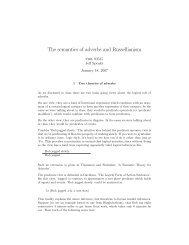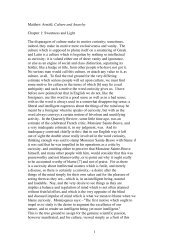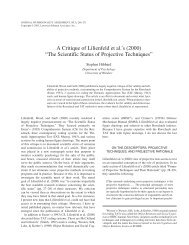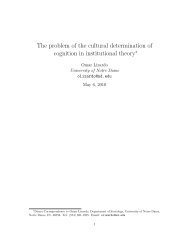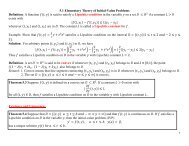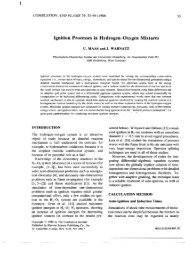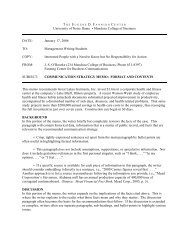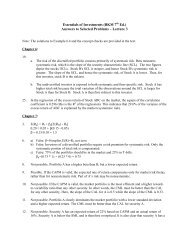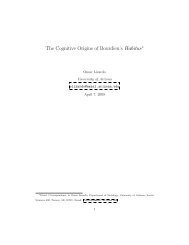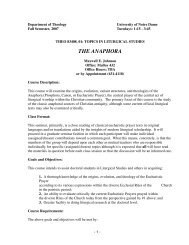In Tuition Game Popularity Rises With Price.pdf - University of Notre ...
In Tuition Game Popularity Rises With Price.pdf - University of Notre ...
In Tuition Game Popularity Rises With Price.pdf - University of Notre ...
You also want an ePaper? Increase the reach of your titles
YUMPU automatically turns print PDFs into web optimized ePapers that Google loves.
<strong>In</strong> <strong>Tuition</strong> <strong>Game</strong>, <strong>Popularity</strong> <strong>Rises</strong> <strong>With</strong> <strong>Price</strong> - New York Times<br />
from 1993 to 2004 , more than double the inflation rate, according to the College Board, while<br />
campus-based financial aid rose 135 percent.<br />
The average cost <strong>of</strong> tuition, fees, room and board at those colleges is now $30,367. Many<br />
charge much more; at George Washington <strong>University</strong>, the sum is more than $49,000.<br />
But aid is now so extensive that more than 73 percent <strong>of</strong> undergraduates attending private<br />
four-year institutions received it in the school year that ended in 2004, not even counting<br />
loans.<br />
“We can cushion the sticker shock,” said Amy Gutmann, president <strong>of</strong> the <strong>University</strong> <strong>of</strong><br />
Pennsylvania, which distributes aid on the basis <strong>of</strong> financial need. “We focus on both middleincome<br />
and low-income families.”<br />
So net prices vary widely on a given campus. On some, as many as 90 percent <strong>of</strong> students<br />
receive support, primarily from the college itself or the federal government.<br />
Page 2 <strong>of</strong> 6<br />
And financial need is not the only basis for it. Many colleges, competing for the students with<br />
high grades and standardized test scores that help a college rise in rankings guides, <strong>of</strong>fer merit<br />
aid ranging from a few thousand dollars to a full scholarship.<br />
But <strong>of</strong>ficials <strong>of</strong> private colleges and universities say they fear that unless other steps are taken,<br />
the middle and upper middle class could ultimately be squeezed out.<br />
“Eventually, if we’re going to keep raising tuition at rates much more than the increase in<br />
family incomes, then something has to be done to make the places more accessible to the<br />
middle class,” said Ronald G. Ehrenberg, director <strong>of</strong> the Cornell Higher Education Research<br />
<strong>In</strong>stitute.<br />
As it is, some students may not even apply to private colleges, scared away from the start by<br />
tuition and unaware <strong>of</strong> the available discounts. After all, tuition and fees at public colleges and<br />
universities — though growing recently at a faster pace than those at private institutions —<br />
remain vastly lower, at an average <strong>of</strong> $5,836, the College Board says.<br />
It can be argued that everyone studying at a private liberal arts college is getting a discount. At<br />
institution after institution, <strong>of</strong>ficials say they <strong>of</strong>fer an education costing tens <strong>of</strong> thousands <strong>of</strong><br />
dollars more than even the college’s “sticker price.”<br />
Take Swarthmore, the elite college half an hour’s drive from Ursinus. <strong>With</strong> an annual budget <strong>of</strong><br />
$106 million to educate just under 1,500 undergraduates, Swarthmore spends about $73,690 a<br />
http://www.nytimes.com/2006/12/12/education/12tuition.html?_r=2&oref=slogin&pagew...<br />
12/12/2006



